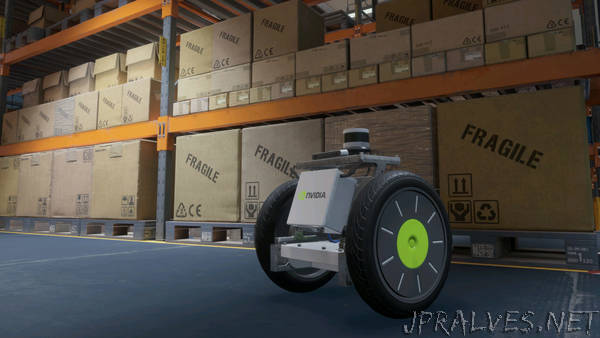Nvidia CEO: Robotics Set to Be the Next Big Boom After AI

As the technological landscape continues to evolve at a dizzying pace, one name that stands at the forefront of innovation is Nvidia. Recently, Nvidia’s CEO has shed light on what he sees as the next monumental opportunity after artificial intelligence (AI): robotics. Indeed, robotics is poised to transform industries, reshape markets, and redefine the boundaries of what machines can do. Let’s dive into the insights shared by Nvidia’s CEO and explore why robotics is the next major revolution.
The Current State of AI and Its Impact on Robotics
Artificial intelligence has altered the way we interact with technology fundamentally. With applications ranging from natural language processing to data analytics, AI’s versatility has had a ripple effect on numerous industries. But what happens next? As AI matures, robotics is positioned to become its natural extension. Utilizing AI capabilities, robotics can move beyond simplistic tasks to more complex, decision-making processes that were once the dominion of human workers.
The Synergy Between AI and Robotics
- AI-Powered Decision Making: Thanks to advancements in AI, robots can now learn from their environment and make decisions autonomously.
- Advanced Perception: With the help of AI, robots are developing sophisticated sensory perceptions, which allow them to better understand and interact with the world around them.
- Improved Collaboration: AI enables robotics to work alongside humans in a safe and efficient manner, improving productivity and reducing risks associated with manual labor.
Nvidia’s Vision for Robotics
Nvidia is not new to the robotics scene. Their technology is already deeply integrated into various robotic systems, and they have a clear vision to push the envelope further. Nvidia’s role in this burgeoning field includes developing powerful computing platforms designed to meet the complex needs of modern robotics applications.
Key Components of Nvidia’s Strategy
- Robotic Computing Technologies: Nvidia’s hardware accelerates the computing capabilities of robots, giving them the ‘brains’ to process data efficiently and act swiftly.
- Software Platforms: Nvidia’s software solutions offer cutting-edge tools for developing and deploying robotic applications rapidly.
- Collaboration with Innovators: By teaming up with industry pioneers, startups, and educational institutions, Nvidia is poised to drive collaborative innovation in robotics.
Market Opportunities in Robotics
Nvidia’s CEO foresees immense opportunities across various sectors where robotics can drive major breakthroughs. Let’s look at some market segments where robots stand to revolutionize the status quo.
Logistics and Supply Chain
The logistics sector is ripe for disruption. From the warehouse to the last mile, robots can enhance efficiency, reduce errors, and lower labor costs. Autonomous delivery vehicles and robotic sortation systems are just the beginning of what’s possible.
Healthcare
Healthcare is another domain where robotic applications are gaining traction. Surgical robots, patient-assisting robots, and logistic robots within hospitals are improving patient outcomes and alleviating the strain on healthcare workers.
Manufacturing
The manufacturing industry has long been a frontrunner when it comes to robotics adoption. Advanced robotic systems powered by AI can handle intricate tasks with precision. They also offer scalability that is often difficult to achieve with human labor alone.
Challenges and Future Directions
While the horizon looks promising for robotics, several challenges lie ahead. Technological hurdles, regulatory frameworks, and consumer acceptance are just a few of the issues that need to be addressed for robotics to reach its full potential.
Overcoming Technological Barriers
- Enhanced Connectivity: Robust network infrastructures are essential for seamless robotic operations, especially in IoT environments.
- Security Concerns: Ensuring that robots are secure from cyber threats is crucial for both safety and operational stability.
- Data Management: Handling massive volumes of data generated by robots is vital for continuous learning and improvement.
Regulation and Ethics
As with any emergent technology, robotics will be subject to regulatory scrutiny. Ethical considerations, such as job displacement and data privacy, must be carefully negotiated to gain public trust and support.
The Path Forward
Nvidia’s roadmap for robotics is both ambitious and exciting. By leveraging its AI expertise and innovative technology stack, Nvidia plans to be a catalyst for the next big leap in robotic capabilities. While challenges exist, the potential rewards—both economic and societal—promise to be transformative. As Nvidia’s CEO suggests, the marriage of AI and robotics is not just an evolution, but a revolution poised to redefine industries and change lives.
In conclusion, as Nvidia continues to spearhead advancements in both AI and robotics, individuals, businesses, and societies stand on the brink of a robotic renaissance. Nvidia’s vision lays a clear pathway for what is to come, spotlighting robotics as the next frontier and a critical space to watch in the years to come.
Subscribe to keep reading
It's a subscribers only post. Subscribe to get access to the rest of this post and other subscriber-only content.
Comments
Post a Comment